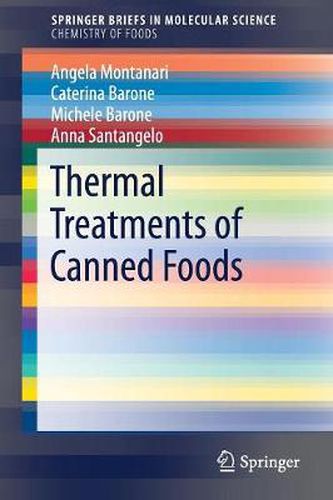Readings Newsletter
Become a Readings Member to make your shopping experience even easier.
Sign in or sign up for free!
You’re not far away from qualifying for FREE standard shipping within Australia
You’ve qualified for FREE standard shipping within Australia
The cart is loading…






This title is printed to order. This book may have been self-published. If so, we cannot guarantee the quality of the content. In the main most books will have gone through the editing process however some may not. We therefore suggest that you be aware of this before ordering this book. If in doubt check either the author or publisher’s details as we are unable to accept any returns unless they are faulty. Please contact us if you have any questions.
This Brief describes the chemical features of canned food products and gives background information on the technology of canning foods. It explains how canned foods are different from other packaged foods, and illustrates and discusses their unique properties, including risks and failures. Canned foods are usually considered to offer a particularly long shelf-life and durability. An understanding of their properties and influences on their durability is therefore of great importance in the industrial production, and this Brief offers a compact introduction to this topic. The authors focus on thermally-preserved foods. They explain that the right choice of thermal treatment method (e.g. pasteurisation, sterilisation) as well as process parameters (e.g. time, temperature) is additionally influenced by criteria such as pH, water content, the presence and concentration of fatty molecules, of calcium, etc. So-called ‘survival curves’ can help in determining the methodology of choice, and the Brief introduces the reader to this concept. The authors also address defects and failures. They introduce selected indicators, which can help identifying failures of the entire food/packaging system, and demonstrate how image and visual analysis can be applied in quality controls. The explanations and industrial production of canned foods are exemplified with the case of canned tomato sauces and beans.
$9.00 standard shipping within Australia
FREE standard shipping within Australia for orders over $100.00
Express & International shipping calculated at checkout
This title is printed to order. This book may have been self-published. If so, we cannot guarantee the quality of the content. In the main most books will have gone through the editing process however some may not. We therefore suggest that you be aware of this before ordering this book. If in doubt check either the author or publisher’s details as we are unable to accept any returns unless they are faulty. Please contact us if you have any questions.
This Brief describes the chemical features of canned food products and gives background information on the technology of canning foods. It explains how canned foods are different from other packaged foods, and illustrates and discusses their unique properties, including risks and failures. Canned foods are usually considered to offer a particularly long shelf-life and durability. An understanding of their properties and influences on their durability is therefore of great importance in the industrial production, and this Brief offers a compact introduction to this topic. The authors focus on thermally-preserved foods. They explain that the right choice of thermal treatment method (e.g. pasteurisation, sterilisation) as well as process parameters (e.g. time, temperature) is additionally influenced by criteria such as pH, water content, the presence and concentration of fatty molecules, of calcium, etc. So-called ‘survival curves’ can help in determining the methodology of choice, and the Brief introduces the reader to this concept. The authors also address defects and failures. They introduce selected indicators, which can help identifying failures of the entire food/packaging system, and demonstrate how image and visual analysis can be applied in quality controls. The explanations and industrial production of canned foods are exemplified with the case of canned tomato sauces and beans.